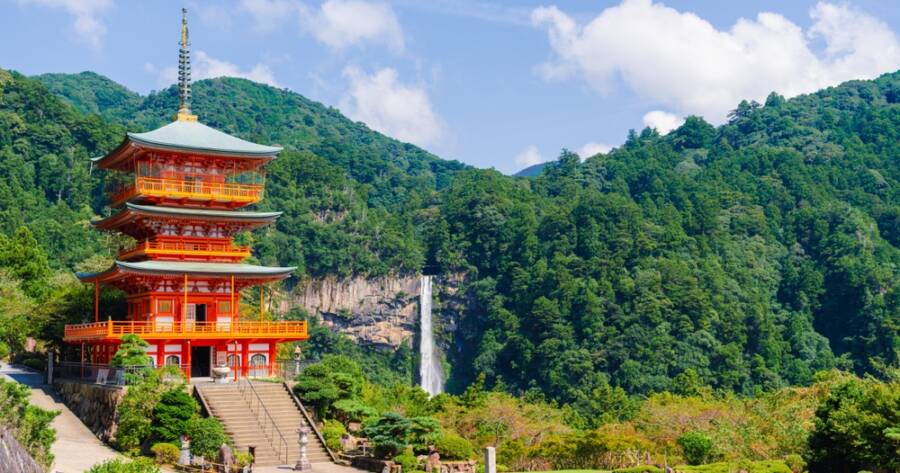Nestled in the Kii Mountains of Japan, the Kumano Kodo is one of the country’s most profound yet lesser-known spiritual journeys. Unlike the bustling routes of the Camino de Santiago, this ancient pilgrimage offers peace, reflection, and connection to nature. Whether you are seeking spiritual growth or a deeper connection to Japan’s traditions, the Kumano Kodo is an unforgettable journey.
A Sacred Pathway Through Time
The Kumano Kodo is a network of pilgrimage routes that have been walked for over 1,000 years. These trails are not just physically challenging—they carry deep spiritual significance, with many pilgrims journeying to the sacred Kumano Sanzan shrines. The three main shrines—Kumano Hongu Taisha, Kumano Nachi Taisha, and Kumano Hayatama Taisha—are central to the pilgrimage, each representing a different facet of the Japanese Shinto religion.
The Kumano Kodo is often called the “Camino de Santiago of Japan” due to its centuries-old history and the spiritual connection it offers to those who walk it. While it may not have the same international fame as the Camino, it remains an essential part of Japan’s cultural and religious landscape. For travelers seeking not just a trek, but a meaningful journey through history and spirituality, the Kumano Kodo offers a one-of-a-kind experience.
Paths That Connect Nature and Spirit
Walking the Kumano Kodo is as much about the journey as it is about the destination. The routes meander through lush forests, past tranquil waterfalls, and up steep mountain paths. As you walk, you will be surrounded by towering trees, moss-covered stones, and the scent of nature that invites quiet contemplation. The paths are designed to guide you not just physically, but spiritually, fostering a sense of connection to the land, the ancestors who walked before, and the divine forces worshipped at the shrines.
Unlike more modern tourist trails, the Kumano Kodo does not require intense physical preparation for most of its routes, though some areas are challenging. The real test is mental and emotional: the path requires you to disconnect from the modern world and reconnect with yourself, your inner peace, and the environment around you. This experience of mindfulness and simplicity is at the core of the pilgrimage.
Experiencing Local Culture and Traditions
The Kumano Kodo is not only a spiritual journey but also a chance to immerse yourself in traditional Japanese culture. As you walk through small villages, you will encounter local people who maintain centuries-old practices. Staying in ryokan (traditional inns) or minshuku (guesthouses) allows travelers to experience the Japanese way of life firsthand, often enjoying simple, home-cooked meals and soaking in local customs.
Along the route, you may come across pilgrim-related festivals, rituals, and ceremonies that have been preserved through generations. The villagers often take pride in the cultural heritage tied to the Kumano Kodo, and many are eager to share their knowledge with travelers. This adds a unique, enriching dimension to the journey, making it more than just a physical challenge.
The Spiritual Significance of the Kumano Kodo
For centuries, the Kumano Kodo has been a place of spiritual significance for both pilgrims and locals. The three main shrines, which sit at the end of the major trails, are dedicated to the deities of nature—kami in Shinto belief. These sacred sites have drawn pilgrims from all over Japan, who seek blessings for health, prosperity, and spiritual enlightenment.
Today, many visitors walk the Kumano Kodo with the same intentions—seeking inner peace, spiritual growth, or simply a moment of stillness away from the hectic pace of modern life. The energy of the land, combined with the quiet solitude of the trail, creates an atmosphere that encourages deep reflection and spiritual awakening. This is why the Kumano Kodo is not just a physical pilgrimage, but a personal journey that transcends the body and enters the realm of the soul.
The Hidden Gem of Japan
While the Kumano Kodo may not be as widely known as other pilgrimage routes, it offers a deeply fulfilling and enriching experience for those who choose to take the path less traveled. The combination of natural beauty, spiritual significance, and cultural immersion creates a journey like no other.
Whether you are walking for the first time or returning to continue a deeper exploration, the Kumano Kodo invites you to slow down, reconnect, and discover the profound peace that comes from walking in the footsteps of generations before you.

